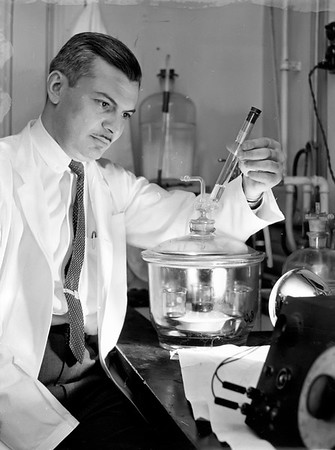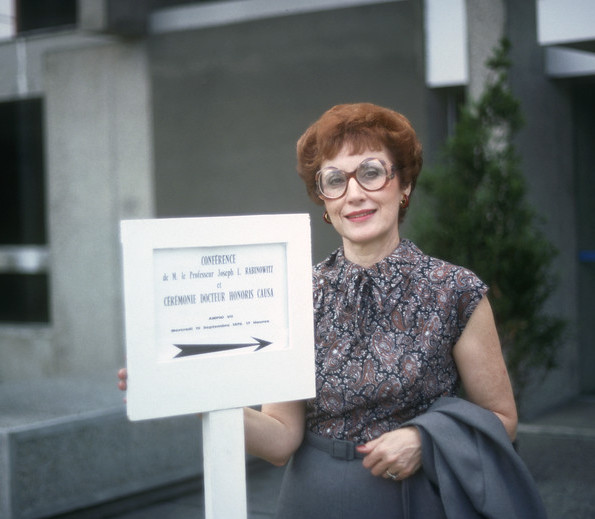

|
In Our Words:
José's Scientific Career
José was at his core a researcher and teacher. This was evidenced throughout his professional career, but also in his personal life:
his style of cooking, his insightful responses during conversations, and his collaborative nature.
For 38 years (from 1953 to 1991), José served as Chief of Radioisotope Research at the Veteran’s Administration Hospital in Philadelphia. In addition to his research, José initiated many protocols that led to greater safety in both laboratories and for patients. In the 1950’s he served on “The Human Committee” which reviewed research proposals to determine the level of risk to patients. On several occasions he challenged prominent physicians whose projects he deemed to be unlikely to result in significant findings while putting patients at high risk. This was long before the 1974 National Research Act created protection for human subjects of biomedical and behavioral research.
José’s scientific accomplishments include the discovery of HMG-CoA which led to the development of statin drugs; the story of this discovery in included in the Volume 3 drafts. He jokingly referred to himself as a “fat chemist” because he often studied lipids.
His curiosity and collaboration with scientists from across the globe resulted in over 300 publications about a wide variety of chemical and biological phenomena. Some of his research originated with his hypotheses on scientific topics. Additonal research evolved as other scientists contacted him to collaborate on methods to test a hypothesis or to ask him to perform the experiments in his laboratory.
José co-authored Radioisotope Methodology with Grafton Chase, a text that became part of the curriculum at the University of Pennsylvania and universities throughout the world. He also co-authored and edited Topics in Medicinal Chemistry with Ralph Myerson. This book compiled articles that included significant research discoveries. Their collection of research topics eventually expanded to four volumes and included some of José’s own research.
José was awarded sabbaticals at Carlsberg Laboratory in Denmark (1957-1958), the Shell Research Ltd Milstead Laboratory of Animal Enzymology in England (1967-1968), and Orsay Laboratory in Paris, France (1973-1974). He also worked for extended periods at laboratories in Mexico and at Baylor University in Texas.
While working at the Veteran’s Administration Hospital in 1958, José joined the faculty of the University of Pennsylvania as an Assistant Professor. In 1970 he became a Full Professor. He taught biochemistry, initially at the School of Medicine and subsequently at the School of Dental Medicine, where he served in many leadership roles.
José’s lectures were legendary. Some of the classes he taught started quite early in the day. To discourage lateness to class, he began each session with a joke. He incorporated humor into the context of his lectures with jokes and props, including a gag where he emphasized a new discovery by pulling a telephone from his jacket (long before mobile phones existed) and pretending to receive the breaking news of a discovery. Students arrived at class in time not to miss the jokes, and shared their love for his lectures for years after their graduations.
José also taught at Philadelphia College of Pharmacy and Science (PCP) and Women’s Medical College (WMCP). He travelled extensively in the United States and internationally, chairing conferences in Europe, South America, and Asia while presenting his research.
For many years he particularly enjoyed participating in the Gordon Conferences in New Hampshire, an invitation-only meeting where scientists spent time in presentations as well as in more relaxed settings developing relationships with the (successful) intention of increasing collaboration and scientific progress.
|
|



